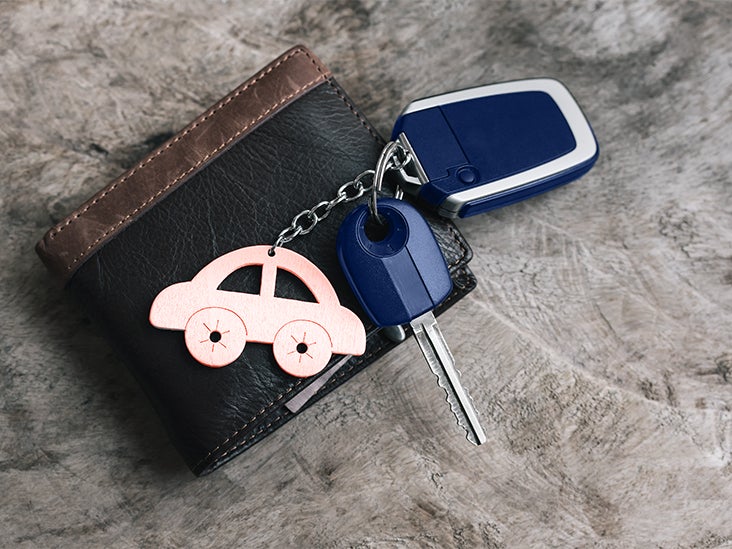
A person may feel anxious about driving for various reasons. Whether they feel fear over the act of driving or being in a vehicle, this anxiety can affect their everyday life.
Past experiences or existing anxiety disorders may contribute to driving anxiety.
This article discusses driving anxiety and what may cause it. It also explores symptoms, treatments, and alternative strategies that may help someone manage the condition.
Fear or phobia of driving a vehicle may cause a person to feel driving anxiety. It can result in significant distress and impact someone’s everyday life. A person may experience emotional distress while driving and avoid certain situations on the road or driving in general.
The
For someone with driving anxiety, the thought of getting in a car may result in symptoms of anxiety. In addition, a person may try to avoid situations where they need to drive or get into a vehicle. This alone can cause additional symptoms of stress or anxiety.
It is important to note that driving anxiety is not an official condition in the Diagnostic and Statistical Manual of Mental Disorders, 5th edition (DSM-5). However, a person may have a phobia associated with driving anxiety. Amaxophobia is a fear of being in a vehicle either as a passenger or driver, and vehophobia is a fear of driving.
Additionally, a healthcare professional may diagnose a person with generalized anxiety disorder (GAD) or another mental health condition if symptoms interfere with a person’s everyday activities.
For some people, driving anxiety may result from being in a road accident or witnessing one. However, according to the Anxiety and Depression Association of America (ADAA), most driving phobias are not related to an experience with an accident.
Below are some common fears and causes of anxiety about driving.
Past negative experiences
A person may remember past negative experiences they have had in a vehicle and worry that a similar scenario will play out again. Examples include:
- driving through bad weather, such as a storm, snow, or fog
- being a victim of road rage
- having a panic attack while driving
- getting lost
Existing anxiety disorders
People who have an anxiety disorder may experience symptoms while driving. For example, GAD may cause someone to have difficulty concentrating or making decisions while driving. This may lead to a person losing confidence in their driving ability.
Additionally, someone who is experiencing significant stress or life changes may be susceptible to driving anxiety.
Driving alone in an unfamiliar place
Some people may fear getting lost while driving, breaking down, or running out of gas. They may worry that their phone will have no signal, and they will not be able to get help if they need it.
Additionally, people may feel unsafe driving alone at night or worry that they cannot see potential hazards clearly when it is dark outside.
Fear of dying in an accident
Fear may cause a person to consider worst-case scenarios and not trust their own or other drivers’ abilities.
Even though someone may not have directly experienced a car accident, their imagination may make them feel anxious about the possibility of dying in an accident.
Being trapped and having a panic attack
People with existing anxiety about being trapped, such as claustrophobia, may become anxious while stationary in traffic. Additionally, people who have had a previous panic attack may fear that they will have one again while driving.
Losing control of the vehicle
Physical symptoms of anxiety, such as a racing heartbeat and sweating, may lead someone to believe they will lose control of their car and cause an accident. A person may feel highly stressed and uncomfortable, clutching at the wheel and worrying about what other drivers might be thinking.
People with driving anxiety may experience the following symptoms, many of which are also indicative of a panic attack:
Additionally, some people may go out of their way to avoid driving or being in a vehicle, which can significantly impact their life.
Psychotherapy (talk therapy) may help someone overcome driving anxiety. The
A person may wish to speak with a healthcare professional about cognitive behavioral therapy (CBT), counseling, or mindfulness techniques.
Exposure therapy
A
The treatment involves a therapist exposing a person to their phobia in a safe and controlled environment to overcome their fear.
A
- two preparative psychotherapy sessions
- five virtual reality exposure sessions
- a final behavioral avoidance test in real traffic
- a closing session
- two follow-up phone assessments after 6 and 12 weeks
The authors found that all participants mastered driving tasks they had avoided before, and 71% showed adequate driving behavior when assessed by a driving instructor.
Other strategies for anxiety
Maintaining a healthy lifestyle may help someone with driving anxiety manage their symptoms.
The ADAA advises people who experience anxiety to use the following strategies:
- talking with a partner, friend, or doctor about their anxiety
- becoming aware of what triggers anxiety by keeping a journal
- being active, eating a balanced diet, and avoiding skipping meals
- avoiding caffeine, which can trigger anxiety symptoms
Someone with driving anxiety may consider alternatives, such as using public transportation or walking. Walking may be a healthier option for shorter trips.
However, people in rural areas may have less access to public transport, and walking may not be an option for people with certain disabilities.
Driving anxiety is a specific phobia that can affect someone’s mental health and cause anxiety symptoms. It may also restrict a person’s everyday activities.
Possible treatments involve exposure therapy, CBT, or other talk therapies. Some people may decide to use public transportation or walk instead of driving.
A person may consider speaking with a healthcare professional about treatment for driving anxiety.

